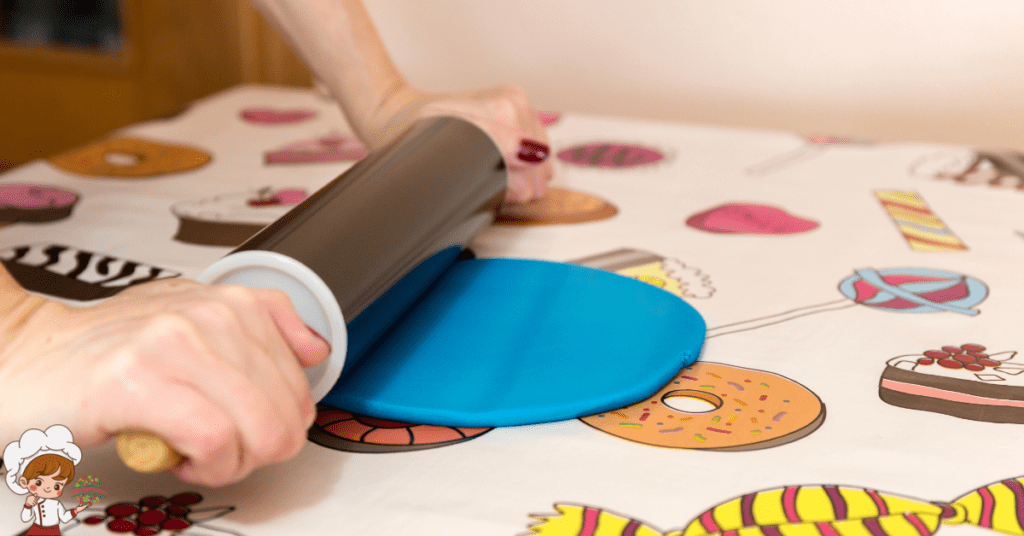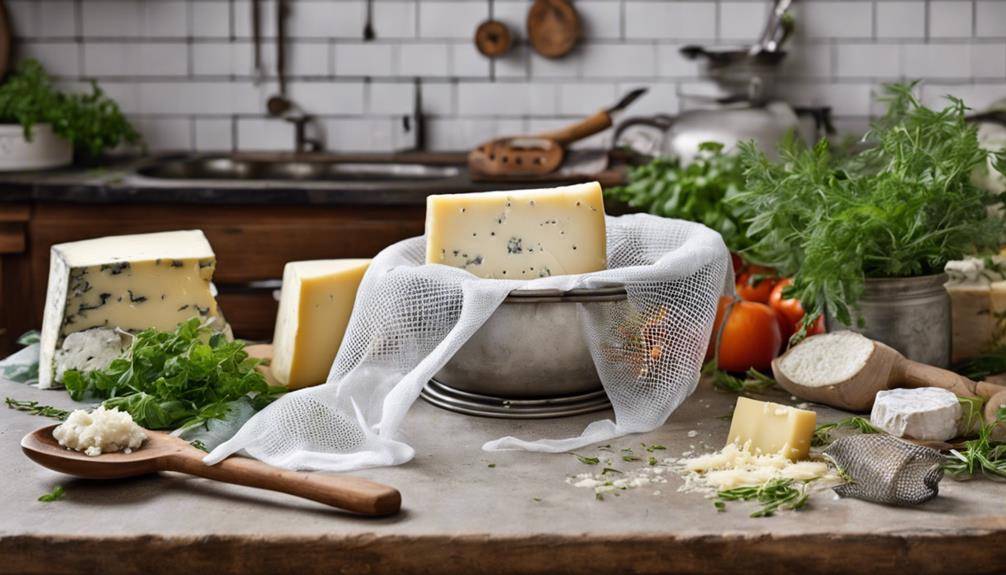Amazing Rolling Pins For Fondant Decorating

Amazing Rolling Pins For Fondant Decorating; When you’re decorating with fondant, the right rolling pin can make a world of difference. It helps you achieve even thickness and a professional finish. Reflect on the type of pin—wooden, silicone, or adjustable rings—each offers unique benefits like durability or easy cleanup. Don’t forget to choose the right size for your project. For larger cakes, opt for longer pins, while narrower ones are great for delicate details. Consistent thickness is key, so using guides can be beneficial. Keep exploring to discover tips, brands to reflect on, and where to find the best rolling pins for your fondant needs.
Importance of Rolling Pins
When it comes to fondant decorating, a baker’s rolling pin is an essential tool that can make all the difference. You might not realize it, but the right rolling pin can greatly enhance your fondant techniques. By using a rolling pin designed specifically for fondant, you guarantee an even thickness, which is vital for achieving that smooth, professional finish.
The history of the rolling pin dates back centuries, with variations found in many cultures. Originally, these tools were made from wood, marble, or even metal, depending on the materials available. Today, you have a range of options that cater to different baking needs, especially in fondant work. A well-chosen rolling pin allows you to control the pressure and thickness of your fondant, preventing it from tearing or sticking.
Moreover, the use of a rolling pin helps you create intricate designs and shapes, setting your cakes apart from the rest. As you roll out your fondant, you’ll notice how an appropriate pin can make the task easier and more enjoyable. By mastering the use of a rolling pin, you’ll elevate your fondant skills and open up new creative possibilities. Whether you’re crafting a simple cake or an elaborate dessert, the right rolling pin is indispensable. So, invest in a quality rolling pin and watch your fondant decorating transform into a truly delightful experience.
Types of Rolling Pins
Rolling pins come in various styles and materials, each tailored to different baking needs and preferences. When you’re looking to decorate with fondant, choosing the right rolling pin can make all the difference. You’ll find traditional designs that have stood the test of time, like the classic wooden rolling pin. These are great for creating a rustic feel and offer a solid grip, allowing you to roll out fondant to the desired thickness effortlessly.
On the other hand, you might want to explore rolling pins with innovative features. For instance, some rolling pins come with adjustable rings that let you control the thickness of your fondant. This feature is especially handy when you’re aiming for precision in your decorations. Another option includes silicone rolling pins, which are non-stick and easy to clean, making them a favorite among many bakers.
If you’re feeling adventurous, consider the embossed rolling pin. These unique tools come with designs that can leave beautiful patterns on your fondant, giving your cakes and pastries an artistic touch. No matter which style you choose, make sure it aligns with your decorating goals. Whether you prefer the charm of traditional designs or the practicality of innovative features, there’s a rolling pin out there that suits your baking style. Remember, the right rolling pin not only enhances your fondant decorating but also makes the process more enjoyable.
Material Options
When choosing a rolling pin for fondant, you’ll want to contemplate the material options available. Wooden pins offer a classic feel, while plastic and silicone options boast unique benefits like easy cleanup and non-stick properties. Each material has its strengths, so let’s explore what works best for your decorating needs.
Wood Vs. Plastic
Choosing between wood and plastic for your fondant rolling pin involves considering factors like durability, ease of use, and the type of fondant you work with. When you look at the durability comparison, wood typically outlasts plastic. A well-cared-for wooden pin can last for years, while plastic may show signs of wear or warping over time.
In terms of heat resistance, wood generally performs better. If you’re working in a warm kitchen, plastic can soften and become difficult to use, impacting your ability to roll fondant evenly. Wood, on the other hand, maintains its shape and integrity under heat, allowing you to work with your fondant without concerns about melting or distortion.
However, plastic rolling pins can be lighter and easier to handle, especially for those new to fondant decorating. They’re also often non-stick, which can be a huge advantage when you’re rolling out delicate fondant. Ultimately, your choice should reflect your specific needs and preferences. Whether you opt for the traditional charm of wood or the modern convenience of plastic, both materials have their unique benefits in the world of fondant decorating.
Silicone Benefits Explained
Silicone rolling pins offer several advantages that can enhance your fondant decorating experience. First off, silicone durability means these pins can withstand heavy use without cracking or warping, making them a reliable choice for your kitchen. You’ll also appreciate the silicone flexibility, which allows you to easily roll out fondant to the perfect thickness without sticking.
When it comes to silicone aesthetics, these rolling pins often come in vibrant colors and sleek designs, adding a touch of style to your baking tools. Using a silicone rolling pin also guarantees silicone ease; they glide effortlessly over the fondant, reducing any frustration during your decorating tasks. Plus, their non-stick surface makes for straightforward rolling, so you can focus on your artistry instead of battling with the dough.
Silicone maintenance is a breeze too; simply toss your rolling pin in the dishwasher or wipe it clean with a damp cloth. Finally, silicone versatility means you can use these pins for other tasks, like rolling out dough or crafting, making them a valuable addition to your kitchen toolkit. Overall, investing in a silicone rolling pin is a smart move for any fondant decorator.
Size Considerations
When choosing a rolling pin for fondant decorating, size matters. You’ll want to contemplate standard sizes, but don’t overlook specialty options that might suit your unique projects. Picking the right size can make all the difference in achieving that perfect finish.
Standard Rolling Pin Sizes
Understanding standard rolling pin sizes is essential for achieving the perfect thickness and consistency when working with fondant. Rolling pins come in various lengths and diameters, typically ranging from 18 to 24 inches in length and 1.5 to 2.5 inches in diameter. Knowing these standard dimensions helps you choose the right tool for your project.
When you’re rolling out fondant, the size of your rolling pin matters. A longer pin allows for a larger sheet of fondant, which is perfect for covering cakes or creating decorative accents. On the other hand, a shorter pin can provide more control for smaller projects, like cupcakes or cookies.
You’ll also find rolling pin variations, such as tapered pins that have thinner ends, making it easier to roll out dough evenly. Flat pins, which have uniform thickness, are great for achieving a consistent fondant layer. By selecting the right rolling pin size and type, you’ll enhance your decorating experience and guarantee your fondant is rolled to the ideal thickness for any cake. So, consider your projects carefully when choosing your rolling pin to get the best results.
Specialty Size Options
For those looking to elevate their fondant decorating, specialty size rolling pins offer unique advantages that standard options may not. These rolling pins come in various widths and diameters, allowing you to achieve specific fondant thicknesses more easily. If you’re working on intricate designs or smaller cakes, a narrower rolling pin can help you roll out fondant precisely without excess bulk.
When using specialty size rolling pins, you’ll find that your rolling techniques can be more refined. For example, a mini rolling pin is perfect for crafting delicate decorations, like flowers or lace, while larger options can quickly cover wider cake surfaces. Having a variety of sizes at your disposal means you can tailor your approach based on the project at hand, making it easier to achieve that professional finish.
Moreover, these specialty pins often feature unique patterns or textures, adding an extra layer of creativity to your work. By choosing the right size, you can enhance the overall aesthetic of your fondant decorations, ensuring that each detail stands out beautifully. Embrace the versatility of specialty size rolling pins, and take your fondant skills to the next level.
Choosing Based on Projects
Choosing the right rolling pin size for your fondant projects can greatly impact your decorating success. When you reflect on your project specific styles, the size of your rolling pin will play a vital role. If you’re working on larger cakes or intricate designs, a longer rolling pin, around 20 inches, will help you roll out fondant more evenly and efficiently. On the other hand, for smaller treats like cupcakes or cookies, a standard 12-inch rolling pin is often sufficient.
Think about the technique adaptations you might need for different projects. For example, if you’re creating delicate lace designs, a smaller pin allows for more control and precision. Conversely, if you’re covering a large cake, you’ll need the leverage that comes with a larger pin.
Ultimately, matching the size of your rolling pin to the specific requirements of your projects can streamline your decorating process and improve your results. Don’t forget to take into account the thickness of the fondant, too—having a size that accommodates your needs will guarantee you achieve the perfect finish every time. The right rolling pin can make all the difference in your fondant decorating journey!
Thickness Guides
When it comes to fondant decorating, having the right thickness for your rolled fondant can make all the difference in achieving a professional finish. If you roll your fondant too thick, it can overwhelm your cake and lead to uneven edges. On the other hand, rolling it too thin may cause it to tear or stick. That’s why using thickness guides is essential.
Thickness guides are tools that help you achieve consistent fondant thickness every time. These guides usually come in the form of rings or spacers that fit onto your rolling pin, ensuring that you roll the fondant to a specific height. This way, you can focus on your rolling techniques without worrying about measuring constantly.
To get started, choose the thickness guide that suits your project. Most cakes require a fondant thickness of about 1/8 inch for covering, while decorations can be rolled thinner or thicker depending on your design. Once you’ve set your guides, start rolling evenly and apply gentle pressure. Keep an eye on your fondant’s elasticity, as it should stretch without breaking.
Non-Stick Rolling Pins
When you’re working with fondant, a non-stick rolling pin can make your life a lot easier. These pins help prevent sticking, ensuring a smooth roll every time. Let’s explore the benefits of non-stick materials and what options are best for your decorating needs.
Benefits of Non-Stick Pins
Non-stick rolling pins offer a world of convenience for fondant decorating enthusiasts. With their specially designed non-stick surfaces, you can roll out fondant without the frustration of it sticking to the pin. This feature greatly enhances your ease of use, allowing you to focus on creating beautiful decorations rather than wrestling with your materials.
When you choose a non-stick rolling pin, you’ll find that it saves you time and effort. You won’t need to sprinkle as much cornstarch or powdered sugar to prevent sticking, which can sometimes alter the texture of your fondant. Instead, you can achieve a smooth, even roll and maintain the quality and pliability of your fondant.
Additionally, non-stick rolling pins are easy to clean. A quick wipe with a damp cloth is often all it takes to keep them looking pristine, making your cleanup process much simpler. Overall, non-stick rolling pins are a practical choice that elevates your fondant decorating experience, making it more enjoyable and less stressful. Embracing these tools will help you master your cake decorating skills with confidence and ease.
Best Materials for Rolling
Choosing the right material for your non-stick rolling pin greatly impacts your fondant decorating results. When it comes to fondant rolling, you want a pin that offers both functionality and durability. Silicone rolling pins are a popular choice; they provide excellent non-stick properties, making it easy to roll out your fondant without it sticking. Plus, silicone is flexible and can withstand various temperatures, ensuring long-lasting performance.
Another great option is a non-stick coated metal pin. These pins combine the strength of metal with a smooth, non-stick surface, allowing for effortless rolling. Their material durability means they can handle the pressure of fondant rolling without bending or warping over time.
If you’re looking for a more traditional feel, wooden rolling pins treated with a food-safe non-stick finish can also be effective. They offer good grip and control while being gentle on the fondant. Just make sure to keep them well-oiled to maintain their non-stick quality.
Ultimately, your choice of material should align with your fondant decorating style and frequency of use. Choose wisely, and you’ll see a significant improvement in your results!
Textured Rolling Pins
Textured rolling pins can transform your fondant decorating game, adding intricate designs with minimal effort. These rolling pins feature raised patterns that imprint onto your fondant, allowing you to create stunning textured patterns without the need for complicated tools or techniques. Whether you’re aiming for a floral motif, geometric shapes, or elegant lace designs, textured rolling pins make it easy to achieve professional-looking results.
Using a textured rolling pin is simple. Just roll out your fondant to the desired thickness, then roll the textured pin over the surface. You’ll love how quickly and easily you can add depth and dimension to your decorations. The key is to apply an even amount of pressure to guarantee the pattern transfers beautifully onto the fondant. If you want to get even more creative, consider using multiple pins with different designs for a layered look.
You can also experiment with various fondant colors and finishes. For instance, rolling out white fondant with a floral textured pin and then dusting it with edible glitter creates a stunning effect. Or you could use a textured pin on colored fondant to add a unique touch to your cake decorations.
Textured rolling pins are versatile and can be used for more than just cakes. Try them on cookies, cupcakes, or even fondant-covered treats. With these handy tools, you’ll discover endless creative techniques to elevate your fondant art!
Adjustable Rolling Pins
Achieving the perfect thickness for your fondant is a breeze with adjustable rolling pins. These handy tools come equipped with adjustable features that allow you to easily set the thickness you need for your fondant. Whether you’re making a delicate layer for a cake or a thicker piece for details, you can customize it to suit your specific project.
One of the main rolling pin advantages is the consistency it offers. With adjustable rolling pins, you won’t have to worry about uneven thickness, which can lead to frustrating results when decorating. Simply select the desired thickness using the built-in guides and roll away. You’ll find that your fondant rolls out smoothly and evenly every time, saving you time and hassle.
Another great benefit is the ease of use. You don’t need to be a professional baker to achieve great results. Most adjustable rolling pins are designed with user-friendly features, making it simple for anyone to create beautiful fondant decorations. Plus, you can switch between thicknesses quickly, which is ideal if you’re working on multiple elements for a cake.
Investing in an adjustable rolling pin can elevate your fondant decorating game. It takes the guesswork out of rolling out fondant, allowing you to focus on your creativity. With just a simple adjustment, you can achieve the perfect thickness for any occasion. So go ahead, roll with confidence, and let your fondant creations shine!
Specialty Rolling Pins
Transforming your fondant decorating with specialty rolling pins opens up a world of creative possibilities. These unique tools are designed to help you achieve intricate decorative designs that can elevate your cakes and desserts to the next level. With specialty rolling pins, you can easily emboss patterns or create textures that mimic lace, wood, or even the natural grain of leaves.
When you use these rolling pins, you’ll find that the rolling techniques you adopt can remarkably impact the final look of your fondant. For example, a textured rolling pin can transfer beautiful designs onto your fondant as you roll it out, allowing you to save time while still achieving stunning results. You don’t have to be an expert to use them; just roll the pin over your fondant, and you’ll see the magic unfold.
Moreover, specialty rolling pins come in various styles and sizes, so you can choose one that fits your specific decorating needs. Whether you’re aiming for a subtle embossed effect or a bold pattern, these pins can help you achieve exactly what you envision.
Incorporating specialty rolling pins into your fondant decorating routine not only enhances your creative expression but also simplifies the process of adding detailed finishes. So, if you’re ready to take your cake decorating to the next level, consider investing in a few specialty rolling pins to reveal endless design possibilities.
Care and Maintenance
Keeping your specialty rolling pins in top shape is essential for achieving the best results in fondant decorating. Proper care and maintenance will guarantee they last longer and perform better. Start with cleaning techniques. After each use, wipe down your rolling pin with a damp cloth to remove any residual fondant or dust. For stubborn bits, a soft sponge with mild soap works wonders. Avoid soaking your rolling pins, especially if they’re made of wood or have intricate designs, as this can warp or damage them.
When it comes to drying, make certain to air dry your rolling pins completely before storing them. This prevents moisture buildup, which can lead to mold or mildew. If you’re using a silicone rolling pin, you can typically just rinse it with warm water and let it dry, as silicone is less prone to absorb odors or stains.
Now, let’s talk storage solutions. Always store your rolling pins in a cool, dry place. If you have multiple pins, consider using a dedicated drawer or container to keep them organized and protected. Avoid stacking heavy items on top of them to prevent warping. For decorative rolling pins, you might even want to display them in a way that showcases their beauty while keeping them safe.
Tips for Using Rolling Pins
Using rolling pins effectively can elevate your fondant decorating game. To get the best results, start by prepping your work surface. Dust it lightly with powdered sugar or cornstarch to prevent sticking. This simple step can save you from frustration later on. When rolling out fondant, apply even pressure to guarantee uniform thickness. You might find it helpful to use guides, like dowels, on either side of your fondant to achieve the desired height.
Next, remember to rotate your fondant as you roll. This technique helps maintain an even thickness and keeps your edges from becoming too thin. If you notice any cracks forming, don’t worry! Just knead the fondant back together and try again.
Taking care of your rolling pins is vital, too. After you finish using them, clean them gently with warm, soapy water. Avoid soaking them or putting them in the dishwasher, especially if they’re made of wood. Proper rolling pin care will guarantee they last longer and perform better.
Common Mistakes to Avoid
When rolling out fondant, many decorators overlook the importance of consistency, leading to uneven results. One of the most common pitfalls is not kneading the fondant enough before rolling. If you skip this step, you might find that the fondant tears or develops cracks. Always take the time to knead it until it’s smooth and pliable.
Another mistake is not using enough cornstarch or powdered sugar on your work surface and rolling pin. This can cause the fondant to stick, making it difficult to roll out evenly. Remember to dust your surfaces lightly and reapply as needed. If you find your fondant sticking, it’s a sign you need more dusting.
You also want to be cautious about the thickness of your fondant. Many decorators either roll it too thin or too thick, which can affect how well it adheres to the cake. Technique tips suggest aiming for about 1/8 inch thickness. Use a ruler or a guide to guarantee uniformity.
Recommended Brands
When it comes to rolling pins for fondant decorating, choosing the right brand can make a big difference. You’ll find top-quality options that deliver excellent results, as well as budget-friendly choices that won’t break the bank. Let’s explore some of the best brands to help you make an informed decision.
Top Quality Brands
You’ll often find that investing in top-quality rolling pins can make a significant difference in your fondant decorating projects. When it comes to choosing the right brand, you’ll want to look at top brand comparisons to guarantee you’re making the best choice for your needs.
Brands like Wilton and Ateco are often praised for their durability and ease of use. Wilton’s rolling pins come with adjustable rings, allowing for precise thickness, while Ateco’s wooden options provide a classic feel that many decorators love. You’ll notice that user reviews highlight the importance of a non-stick surface, which can save you time and frustration during your decorating sessions.
Another standout is the Fox Run Marble Rolling Pin. Its weight and smooth surface make it perfect for fondant, and users rave about how effortlessly it rolls out dough. Don’t forget about the ergonomic designs from brands like Joseph Joseph, which offer comfort for prolonged use.
Budget-Friendly Options
Finding a reliable rolling pin that fits your budget doesn’t have to feel like an intimidating task. There are plenty of affordable brands that offer great quality without breaking the bank. One standout option is the Fox Run Marble Rolling Pin. This rolling pin is not only stylish but also effective for rolling out fondant evenly.
Another great choice is the Wilton Rolling Pin, known for its durability and ease of use. This brand has been a favorite among bakers for years, making it a trustworthy option for your DIY rolling needs.
If you’re looking for something more unique, consider the Baker’s Secret Silicone Rolling Pin. Its non-stick surface makes it easy to handle fondant, and it’s often available at a budget-friendly price.
Lastly, check out local craft stores or online marketplaces for DIY rolling options. Sometimes, you can find great deals on lesser-known brands that still deliver quality performance. By exploring these budget-friendly options, you can enjoy fondant decorating without overspending, ensuring your baking adventures stay fun and affordable.
Where to Buy Rolling Pins
If you’re on the hunt for the perfect rolling pin to elevate your fondant decorating skills, several options await you both online and in-store. You can start your search with online retailers, which often offer a wide variety of rolling pins suited for fondant work. Websites dedicated to baking, such as specialty baking websites, typically have user reviews and ratings that can help guide your choice.
If you prefer shopping in person, local shops and specialty stores often carry quality kitchen supply items, including rolling pins designed for fondant. Craft stores are another great option, as they usually stock tools specifically for cake decorating, making it easy to find what you need.
Don’t overlook discount outlets and home goods stores. They frequently have rolling pins at competitive prices, allowing you to explore budget-friendly options without sacrificing quality.
Whether you opt for the convenience of online shopping or the tactile experience of browsing local shops, you’re bound to find a rolling pin that suits your needs. Just remember to reflect on the material, size, and handle type to guarantee you’re getting the best tool for your fondant decorating projects. With the right rolling pin in hand, you’ll be well on your way to creating stunning cakes and treats!
Frequently Asked Questions: Amazing Rolling Pins For Fondant Decorating
Can I Use a Regular Rolling Pin for Fondant?
You can use a regular rolling pin for fondant, but it might not give you the best results. Different rolling pin types, like those with guides, help you achieve the perfect fondant thickness more easily.
How Do I Clean a Textured Rolling Pin?
To clean a textured rolling pin, use warm soapy water and a soft brush. Focus on the textured surfaces, applying gentle scrubbing techniques to remove any residue. Rinse thoroughly and let it air dry completely.
Are Silicone Rolling Pins Better Than Wooden Ones?
When choosing between silicone and wooden rolling pins, consider that silicone offers advantages like non-stick properties and easy cleaning, while wooden pins can be prone to sticking and require more maintenance. You’ll likely prefer silicone for convenience.
Can I Chill My Rolling Pin Before Use?
Yes, you can chill your rolling pin before use. It helps maintain chilled dough’s temperature and prevents sticking, ensuring your fondant consistency stays smooth and manageable, making your decorating process much easier and more enjoyable.
What Is the Best Way to Store Rolling Pins?
To store your rolling pins, keep them upright in a container to prevent warping. Consider the rolling pin materials and sizes; wood needs different care than silicone or marble, so adjust your storage accordingly.
Conclusion
To sum up, choosing the right rolling pin for fondant decorating can make all the difference in your baking experience. By understanding the various types, materials, and sizes available, you can find the perfect tool to achieve that smooth, professional finish. Remember to follow the tips and avoid common mistakes to enhance your skills. With the right rolling pin in hand, you’ll be well on your way to creating stunning fondant decorations that impress everyone!








